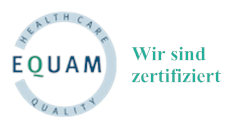Wound Clinic
In the wound clinic, we treat people with acute or chronic wounds. This presents us with new challenges time and again. Together with the patients, relatives and other involved parties, we try to ensure the best possible treatment. We work together with angiologists, wound outpatient clinics, dermatologists, surgeons and Spitex, among others.

Cases for the wound consultation
As a certified nurse and certified wound expert, Franziska Uhr has experience in long-term, acute and outpatient care. She can advise and treat you and your loved ones on the following topics:
- Care and support options
- Acute and chronic wounds
- Compression therapy
- Fall prevention
- Aids (grab bars, shower chair, rollator, wheelchair, etc.)
If necessary, she will also be happy to come to your home to get a better grasp of the situation. This also applies to wound treatments if you or your relatives are not mobile.
Factors influencing wound healing
In common parlance, chronic venous insufficiency is called "varicose vein". Due to increased pressure in the veins (e.g. due to thrombosis (clogged vein due to blood clot), weak connective tissue or long periods of sitting/standing), they dilate over a long period of time. As a result, the venous valves can no longer close completely. There is a backlog of blood and fluid into the tissue, which promotes the development of wounds.
Diabetes mellitus is popularly called diabetes. In fact, sugar is the problem. For more details, see Diabetes mellitus.
Poorly controlled blood sugar can have serious consequences over a long period of time. The main problems are changes in the blood vessels and nerves.
In micro- and macroangiopathy (disease of the small and large blood vessels), blood flow and thus the supply of oxygen and nutrients to the tissue is restricted, which can lead to chronic, poorly healing wounds.
Pain causes stress in the body. The stress causes the blood vessels to be narrower. Thus, the blood flow from the tissue is reduced. This leads to less oxygen and nutrients being transported to the cells. This has the negative consequence that wound healing is slower. If you have pain, it is important to report it so that it can be treated in the best possible way.
Pressure on the tissue leads to reduced blood flow and thus to a reduced supply of oxygen and nutrients to the tissue. The pressure can act from the inside and from the outside. From the inside, it is usually bony prominences, for example at the hallux valgus or at pressure points in the sacral region from lying down for a long time. Malpositions can also lead to increased pressure. In the case of foot deformities such as hallux valgus, the pressure from shoes is usually added to this. The result is chronic wounds
In common parlance, peripheral arterial occlusive disease is also called window-shopping disease. This has a simple explanation. Due to the reduced blood flow to the tissues caused by the narrowing of the arteries and the increased need for oxygen and nutrients during movement, pain develops in the legs. These disappear relatively quickly if the affected person remains standing. In peripheral arterial disease, blood lipids, inflammatory cells or blood clots have been deposited inside the arteries. This leads to thickening and stiffening of the vessel walls, which results in a reduced supply of blood to the adjacent tissue, which promotes the development of chronic wounds.
For wound healing, the body has an increased need for protein and energy. In addition, vitamin and mineral intake must also be increased. Poor or inadequate nutrition delays wound healing.
Smoking increases the carbon monoxide content in the blood. This causes the hemoglobin to absorb and transport less oxygen. As a result, a wound is supplied with less oxygen, which worsens wound healing. Long-term smoking can also lead to peripheral arterial disease.





